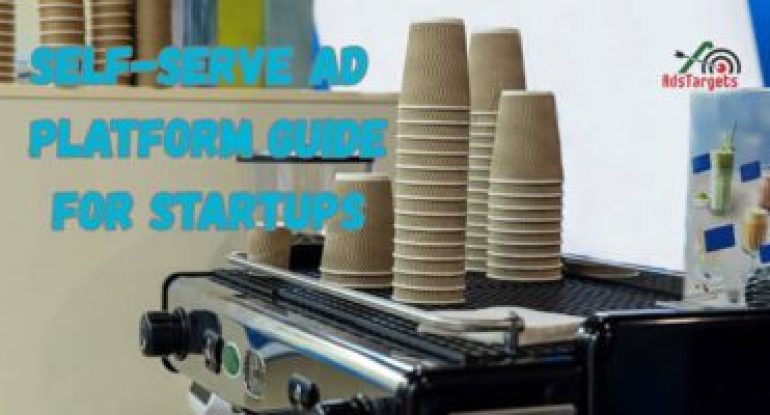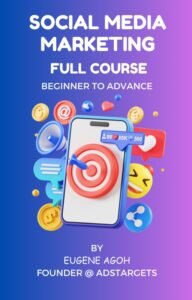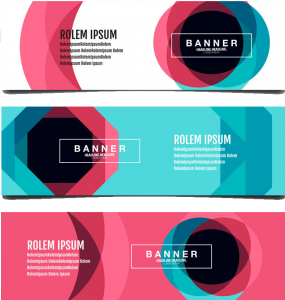If you’ve ever run an ad on Facebook or Google, guess what? You’ve already used a self-serve ad platform—even if you didn’t know that’s what it was called.
In today’s digital advertising world, platforms like Google Ads and Facebook Ads are household names. Marketers, agencies, business owners—even bloggers—use them every day to launch and manage ad campaigns. But behind the scenes, what really makes these tools so popular is how simple and accessible they are.
That simplicity comes from the fact that they’re self-serve ad platforms. That means you don’t need to talk to a sales rep, schedule a meeting, or wait for someone to run your campaign for you. You just log in, choose your budget, write your ad, set your target audience, and launch. All on your own. At your own pace.
This kind of control is what makes self-serve platforms so powerful—especially for small businesses, startups, or solo entrepreneurs who want to market smarter without spending a fortune or waiting on someone else to get things moving.
In this article, we’re going to break it all down—what a self-serve ad platform really is, how it works, why it’s different from a managed campaign, and what you should know if you’re thinking of using (or even building) one yourself. Let’s keep it simple and make it make sense.
Table of Contents
ToggleWhat Is a Self-Serve Ad Platform (And Why Does It Matter)?

A self-serve ad platform—sometimes called a self-service advertising platform—is simply a tool that lets advertisers take control of their own ad campaigns without needing someone else to manage everything for them.
Think of it like this: instead of hiring someone behind the scenes to build and run your ad, you get to log in, do it yourself, and launch your campaign exactly the way you want. You decide your budget, write your message, choose who sees your ad, and track how it performs—all from a single dashboard.
This type of platform is mostly used by:
Advertisers (businesses that want to promote something)
Ad agencies (companies that run ads for their clients)
In the past, if you wanted to advertise online, you had to go through an ad sales rep or work directly with a publisher’s ad operations (AdOps) team. That meant back-and-forth emails, approval delays, and not much control. But with a self-serve ad platform, all of that changes.
You don’t need to be an expert or have a big budget. These platforms are built to be simple, fast, and flexible—perfect for small teams or even individuals who want to get their message out there without the hassle.
In short, a self-serve ad platform puts the power in your hands. You create, manage, and optimize your own ads, all on your schedule, and often with real-time results. Whether you’re promoting a product, an event, or your entire business, this kind of platform helps you do it smarter and faster.
Next, we’ll dive into how it works and what makes it different from managed advertising services. But for now, just remember: if you’ve ever wished launching ads was as easy as posting on social media—this is the tool that makes that possible.
How Does a Self-Serve Ad Platform Actually Work?

Alright, let’s break it down. You’ve heard the term self-serve ad platform, but how does it actually work behind the scenes?
At its core, a self-serve ad platform is like a digital control room for your ad campaigns. It connects with different advertising technologies (called AdTech) that help get your ads in front of the right people, in the right place, at the right time.
Here’s a simple way to picture it:
You log into the platform and create your campaign—add your headline, image, budget, and who you want to reach (like “parents in Lagos who love online shopping”). Once you click launch, your campaign settings are sent off to the powerful systems working behind the scenes—like DSPs (demand-side platforms), SSPs (supply-side platforms), and data tools like DMPs or CDPs.
These platforms help:
#1. Match your ad with available space on websites, apps, or video platforms
#2. Use customer data to target your ideal audience
#3. Optimize when and where your ads appear based on performance
This connection usually happens through APIs (application programming interfaces), which is just a fancy way of saying the systems talk to each other automatically.
And here’s the best part: if you go back into the self-serve ad platform and make a change—like upping your budget or switching the image—those updates are instantly passed on to all the connected platforms. It’s fast, smooth, and fully in your control.
You don’t have to email a rep or wait hours to see changes go live. Everything updates in real time, so your campaign stays fresh and focused.
So to sum it up: a self-serve ad platform works by putting you in the driver’s seat, while quietly syncing with the powerful tools that place your ads across the web. You get full control, clear results, and the freedom to launch or tweak campaigns whenever it works for you.
Self-Serve vs. Managed Ad Campaigns: What’s the Real Difference?

If you’re new to digital advertising, it’s easy to get confused by all the options. One of the most common questions we get is: What’s the difference between a self-serve ad platform and managed ad services?
Let’s keep it simple.
Most advertising platforms—especially DSPs (that’s short for demand-side platforms)—offer two ways to run your campaigns:
Option 1: Self-Serve Ad Campaigns
This is where you take control.
Using a self-serve ad platform, advertisers or agencies log in, set up their campaign, choose their audience, set a budget, design their ads, and launch everything themselves. You don’t need to go back and forth with a sales rep or wait for someone else to hit the go button.
It’s kind of like online banking—you do it all yourself, at your own pace, and on your own schedule. A self-serve ad platform is perfect for businesses that want flexibility, speed, and more control over their ad spend.
Option 2: Managed Ad Campaigns
This is more hands-off.
With a managed campaign, you hand over the details to the ad platform’s team—usually their AdOps (Ad Operations) or advertising sales experts. They handle everything for you: setting up your campaign, running it, and optimizing it based on performance.
It’s like hiring a full-service catering team instead of cooking dinner yourself. It can be helpful if you don’t have time or experience, but it also means you’re relying on someone else to make all the key decisions.
Which One’s Right for You?
If you want full control, instant changes, and lower management costs, a self-serve ad platform is probably your best bet.
If you’d rather hand off the heavy lifting to someone else and don’t mind the extra cost, managed services can work too.
The good news? Many platforms let you choose based on your needs—and even switch between options if your strategy changes.
Bottom line: self-serve ad platforms give you the freedom to run ads your way, while managed services take the wheel for you. It’s all about finding the balance that fits your business and your comfort level.
Who Can Build a Self-Serve Ad Platform (And Why They’d Want To)?
You might be wondering: Who exactly builds these self-serve ad platforms, and what do they get out of it?
The short answer? More businesses than you might think.
A self-serve ad platform is basically a tool that puts the power of digital advertising into the hands of the advertiser. It removes the middleman and makes campaign setup, targeting, and budget control easier and faster. And the best part? These platforms aren’t just built by big tech giants—they can be built and used by different kinds of companies that want to offer more control and flexibility to their clients or users.
Let’s break it down by type of business:
#1. AdTech Platforms
AdTech companies—like demand-side platforms (DSPs)—are at the heart of online advertising. These are the tools advertisers use to buy ad space across the internet.
By building a self-serve ad platform, an AdTech company can let advertisers and agencies launch their own campaigns without needing help from an internal team. That means:
#1. More clients can be onboarded quickly
#2. The AdOps team can spend more time on higher-value managed services
#3. Advertisers get faster access to tools they can control themselves
It’s a win-win: clients get speed and flexibility, and the AdTech company can grow faster without burning out their support teams.
#2. Publishers and Media Companies
Think about companies like online news outlets, blogs, or video-streaming platforms. These businesses have audiences—people who regularly consume their content.
By launching their own self-serve ad platform, these publishers allow advertisers to run ads directly on their websites or apps. The platform usually connects to data tools (like a DMP or CDP) so advertisers can target very specific groups of users. It also plugs into ad servers that make sure the right ad shows to the right person at the right time.
This setup gives publishers:
#1. More control over who advertises on their properties
#2. A new revenue stream without having to sell every ad manually
#3. A way to offer targeting features that appeal to modern advertisers
#3. Advertising Agencies
Ad agencies often run ad campaigns for clients across several platforms—like Google Ads, Facebook Ads, or multiple DSPs.
Instead of juggling everything manually, an agency can build its own self-serve ad platform where clients can:
#1. Log in, create their own campaigns, and choose where the ads will run
#2. View performance reports across multiple channels in one place
#3. Save time by using a simplified, custom dashboard made just for them
This makes campaign management easier, helps the agency stand out from competitors, and gives clients a better experience overall.
So, who can build a self-serve ad platform? Tech companies, publishers, and ad agencies—all for different reasons. But the goal is the same: to make advertising easier, faster, and more accessible for everyone involved.
And as digital advertising continues to evolve, more companies are realizing that putting power in the hands of their users isn’t just smart—it’s essential.
What Makes a Self-Serve Ad Platform Work? The Key Features You Should Know
Every self-serve ad platform might look a little different depending on who built it and what it’s used for. But no matter the brand or purpose, there are a few key features that every solid platform must have.
Think of a self-serve ad platform like a really smart digital dashboard—one that helps advertisers do everything from creating ads to tracking how well they perform, all without needing extra help from a tech team. Below are the core pieces that make the whole thing run smoothly:
#1. A User-Friendly Interface (UI)
This is the front door to the platform. It’s where you, your clients, or advertisers log in to manage everything.
A good UI should be:
Clean and easy to navigate
Clear about where to go for each task (like launching a new campaign or checking reports)
Accessible for both beginners and advanced users
Whether you’re a digital publisher, an ad agency, or a tech platform, your self-serve ad platform needs a smooth and simple interface so users feel comfortable managing campaigns, adjusting settings, and integrating tools—all in one place.
#2. Campaign Management Tools
This is where the magic happens. The campaign builder inside your platform lets users:
Choose the ad format (text, image, video, native, etc.)
Set the budget and campaign timeline (start and end dates)
Pick where the ads show up (specific websites or apps)
Target specific locations, devices, audiences, and more
It’s kind of like building your own mini marketing campaign in a few clicks. With the right tools, even someone brand new to digital advertising can confidently launch a campaign without needing expert help.
#3. Real-Time Reporting Dashboard
After an ad goes live, users want to see how it’s doing—and that’s where the reporting dashboard comes in.
This section shows clear, easy-to-understand performance metrics like:
Impressions (how many times the ad was seen)
Clicks (how many people interacted with the ad)
Conversions (how many people took the action you wanted, like buying something or signing up)
Click-through rate (CTR) and conversion rate
Breakdowns by location, device, ad format, ad size, and more
Basically, it answers the big question: “Is this ad working?”
#4. User Management Controls
If multiple people or teams are using the platform, you need a way to manage who can see and do what.
User management lets you:
Add or remove users
Assign roles and permissions (for example, giving a client access to campaign data but not the billing info)
Keep your workspace organized and secure
This is especially useful for agencies or publishers who offer advertising access to multiple clients.
# 5. Integrations With AdTech and Data Platforms
Here’s where things get a little more technical—but stay with me!
A self-serve ad platform doesn’t work in a vacuum. It needs to connect to other systems to actually deliver ads and target the right audience. That’s where integrations come in.
You’ll typically need to connect with:
AdTech platforms like DSPs, SSPs, ad networks, and ad servers (to run the ads)
Data platforms like DMPs or CDPs (to help with audience targeting)
For example, if a publisher builds a self-serve ad platform, they’ll use a CDP to help advertisers target specific visitors based on browsing behavior or demographics. And they’ll rely on an ad server to actually place the ad in front of that audience.
If you’re building—or choosing—a self-serve ad platform, make sure these five features are front and center. Together, they make the platform powerful, easy to use, and capable of handling real-world campaigns from start to finish.
Because at the end of the day, a self-serve platform should feel like a friendly assistant, not a tech puzzle. It should empower users to launch campaigns with confidence—and help them learn, grow, and succeed along the way.
Should You Build or Rent a Self-Serve Ad Platform? Here’s What to Know

So, you’ve decided you want to use a self-serve ad platform to give advertisers more control, save time, and grow your revenue. Great! But now comes the big question: Should you build your own from scratch—or rent one that’s already made?
Both paths have their perks. It really depends on your goals, your size, and how much time, money, and technical know-how you’ve got on hand.
Let’s break it down in plain English so you can decide what works best for your business.
BUILDING YOUR OWN SELF-SERVE AD PLATFORM
If you’re thinking long-term and want full control, building might be the way to go. Here’s what makes it appealing:
✅ Advantages:
You own everything – the technology, the code, the data, and the intellectual property (IP). No licensing, no middleman.
You control the roadmap – want to add a new feature or change how something works? You decide what gets built and when.
Custom everything – tailor your platform to your exact needs, whether it’s custom integrations with other tools, unique workflows, or a one-of-a-kind user experience.
Best for:
Large AdTech companies that already have development teams
Big publishers and media houses with their own audience base
Mid- to large-sized ad agencies that manage many clients and want to offer a premium, branded platform
But keep in mind:
Building takes time, money, and ongoing technical maintenance. If you’re not ready for the long haul, it might stretch your resources.
RENTING A SELF-SERVE AD PLATFORM
Don’t have a tech team or a big budget? Renting can get you started fast—and often for less money upfront.
✅ Advantages:
You’re up and running quickly – start launching campaigns the same day you sign up.
Lower ongoing costs – no big investment needed in developers, servers, or support.
No technical headaches – forget about updates, bugs, or system crashes. The platform provider takes care of it all.
Best for:
Small AdTech companies and early-stage startups testing out a business idea
Niche publishers and smaller media brands that want an ad revenue stream
Boutique or local ad agencies who want to offer digital ad services without building their own tools
Keep in mind:
You won’t own the tech, and customization might be limited. You’re working within someone else’s rules—and you may share space with other advertisers using the same platform.
SO… BUILD OR RENT?
If you’re focused on speed and simplicity, renting a self-serve ad platform gets you started with less effort. If you’re playing the long game and want full control of your ad tech stack, building your own gives you the flexibility and independence to grow at your pace.
Both options are powerful—it just depends on where your business is today and where you want it to be tomorrow.
How to Choose the Right Self-Serve Ad Platform (Without Regretting It Later)

Let’s be honest—not every self-serve ad platform is created equal. Picking the wrong one can feel a bit like showing up to a high-stakes showdown with the wrong gear. Sure, you’ve got a tool—but is it really the right one for the job?
The truth is, the digital ad world offers a ton of options. Each self-serve ad platform comes with its own unique strengths, audience reach, and learning curve. Choosing wisely could mean the difference between making real sales… or burning through your budget with little to show for it.
Let’s Look at Some of the Big Players
Here’s a quick peek at the top platforms and what they’re best at:
Google Ads: This is the all-in-one giant. From search results and display banners to YouTube ads, Google’s reach is massive. Great if you want a wide net.
Meta Ads Manager: Runs your ads on Facebook and Instagram. Perfect for precise demographic targeting (think age, interests, and behaviors).
TikTok Ads Manager: Growing fast and brilliant for short, catchy videos. If Gen Z is your crowd, this one’s gold.
LinkedIn Campaign Manager: The go-to place for B2B marketing. Ideal for reaching professionals by industry, job title, and company size.
Reddit Ads & Quora Ads: Smaller but super powerful if you’re targeting niche, highly engaged communities.
How to Choose the Right One for YOU
Before you sign up or start spending, ask yourself a few important questions:
#1. Where’s Your Audience Hanging Out?
If you’re selling trendy sneakers to teenagers, LinkedIn isn’t your best bet. But if you offer software for HR professionals, LinkedIn becomes a goldmine. Always go where your people already are.
#2. What Kind of Ads Do You Want to Create?
Need video? Animations? Carousel images? Make sure the platform supports the types of ads that match your creative style—and your audience’s attention span.
#3. How Flexible Is Your Budget?
Some platforms are beginner-friendly and let you start with just a few dollars. Others might need a bigger spend before you start seeing traction. Know what you can afford to test, and choose a platform that fits your budget’s comfort zone.
#4. How Easy Is It to Learn?
Be honest: do you have time to learn a complex system? Some self-serve platforms (like Google Ads) can be pretty technical. Others are more plug-and-play. If you’re just starting out, it’s okay to choose a platform that’s easier to use.
One Size Doesn’t Fit All
The best self-serve ad platform for you isn’t always the biggest or the most hyped—it’s the one that fits your business goals, your budget, and your audience.
If you’re a small brand with just $500 to test the waters, you might see more bang for your buck on TikTok or Quora than trying to compete with huge brands on Google. And that’s okay.
So take a breath, do your research, and pick the platform that works for you, not just the one everyone else is using.
In the end, success isn’t about having the fanciest tools—it’s about having the right tools for your mission.
Setting Up Your First Campaign with a Self-Serve Ad Platform – A Step-by-Step Guide
So, you’re ready to launch your very first ad campaign using a self-serve ad platform? That’s exciting—and honestly, it’s not as intimidating as it sounds. Think of it like baking cookies for the first time. You follow a few simple steps, test the results, tweak the recipe, and before long, you’ve got something everyone wants a piece of.
The beauty of using a self-serve ad platform is that you’re in the driver’s seat. You don’t need a full marketing team or a tech degree—you just need a plan, a little patience, and a willingness to experiment.
Let’s walk through it, step by step.
#Step 1: Define Your Campaign Goal (Know Your “Why”)
Before you even click that “Create Campaign” button, ask yourself: What do I want this ad to do?
Do you want more people to visit your website?
Are you looking to increase sales?
Maybe you just want people to discover your brand?
Your answer will shape every decision from here on out. Most platforms offer goal presets like:
“Website Traffic”
“Leads”
“Brand Awareness”
“Sales/Conversions”
Pick the one that best matches your goal. When you’re clear on your objective, the platform can help optimize your ad to deliver exactly that.
#Step 2: Choose and Refine Your Target Audience
Here’s where it gets fun—you get to decide who sees your ad.
A good self-serve ad platform lets you choose from tons of targeting options, such as:
Demographics (age, gender, location, income)
Interests (like fitness, cooking, fashion, tech)
Behavior (online habits, shopping behavior, device usage)
Lookalike audiences (people similar to your best customers)
The goal is to be specific enough to reach interested people, but not so narrow that you limit your chances. Think: “People who love vegan recipes and shop online” instead of just “women in their 30s.”
#Step 3: Set Your Budget and Pick a Bidding Strategy
Now let’s talk money.
You don’t need a giant budget to start. Set something small and manageable, like a daily budget of $5–$10, and see how things go. Most self-serve platforms offer flexible spending options like:
Manual CPC (Cost Per Click) – You choose what each click is worth to you.
Automated Bidding – Let the platform adjust bids to get you the best value.
Target CPA (Cost Per Action) – You tell it what you’re willing to pay for a conversion.
Start slow, gather data, and scale up only when something’s working. Think of your budget like testing ingredients in a recipe—try a bit, then adjust.
#Step 4: Design Scroll-Stopping Ads
Now it’s time to create your ad. This is where your words and visuals come together to grab attention.
Tips for great ad creatives:
Use a clear headline that tells people what’s in it for them
Add vibrant visuals that stop people from scrolling past
Keep your text short and sharp—no one wants to read a novel
End with a strong call-to-action (CTA) like “Shop Now” or “Get 10% Off”
Pro tip: Create a few different versions of your ad to test which one performs better. Something as small as changing the color of a button or tweaking the wording can make a big difference.
#Step 5: Launch and Keep an Eye on Performance
Alright, you’ve built your ad. Time to launch!
But remember—clicking “go” isn’t the end. You’ll want to monitor your campaign closely (especially in the first few days).
Key things to watch:
CTR (Click-Through Rate) – Are people clicking?
Cost Per Click (CPC) – Are you paying too much per click?
Conversions – Are people taking action after clicking?
ROAS (Return on Ad Spend) – Is your ad making money or just spending it?
Most platforms go through a short “learning phase” where performance fluctuates. Give it time before making major changes unless something is seriously off (like no impressions or super high CPCs).
Your first campaign might not be perfect—and that’s totally okay. Every successful advertiser started exactly where you are: testing, learning, tweaking, and improving over time.
With a good self-serve ad platform, you don’t need to wait on anyone. You’ve got the tools, the control, and now, the know-how to create something awesome.
So go ahead—take the plunge, launch that ad, and start reaching people who are ready to discover what you’ve got to offer.
Avoid These Common Mistakes When Using a Self-Serve Ad Platform
Even the best digital marketers slip up sometimes. And if you’re just getting started with a self-serve ad platform, it’s totally normal to make a few wrong turns. But don’t worry—we’re here to help you dodge the most common mistakes so you can hit the ground running (instead of stumbling).
Think of this as your map through the ad campaign jungle. Here’s what to watch out for:
Mistake #1: Ignoring Audience Segmentation
This one’s a biggie.
If you try to talk to everyone the same way, you’ll likely connect with no one. A common trap when using a self-serve ad platform is creating one generic campaign and hoping it works for all your customers. But people are different—and your ads should be too.
Instead: Break your audience into smaller, specific groups (called segments). For example:
New visitors vs. returning customers
Young adults vs. parents
City dwellers vs. rural shoppers
Then create messages that speak directly to each group’s needs, style, or interests. It’s like picking the right birthday card—you wouldn’t give your grandma the same one you’d give your best friend, right?
Mistake #2: Skipping A/B Testing
Would you buy a car without test driving it? Of course not. So why run just one ad without testing what actually works?
Many beginners launch a single version of their ad and hope it performs well. But with a self-serve ad platform, you can (and should!) run multiple variations. This is called A/B testing.
Instead: Try small changes to see what gets better results. For example:
Use two different headlines
Swap out your image
Test different call-to-action buttons (like “Shop Now” vs. “Get the Deal”)
Run the tests, track what works best, and double down on the winning version. It’s the secret sauce behind high-performing ads.
Mistake #3: Not Setting Up Conversion Tracking
Imagine launching your ad, getting a bunch of clicks, and then… crickets. You have no idea what people actually did after they clicked. That’s what happens when you don’t set up tracking.
Instead: Make sure to install your ad platform’s tracking pixel (a small bit of code for your site) and set up specific conversion events like:
Purchases
Sign-ups
Downloads
Page visits
This gives your self-serve ad platform the data it needs to optimize your campaign and helps you know if your ad is truly working—or just getting clicks for fun.
Mistake #4: Targeting Too Broadly
Sure, it’s tempting to reach “as many people as possible.” But casting a wide net can just mean you’re paying to show your ad to folks who aren’t really interested.
Instead: Start small and focused. Target people who are most likely to want what you’re offering—based on their location, interests, or past behavior. Once you see what’s working, you can slowly expand.
Remember: It’s better to reach 1,000 people who care than 10,000 who don’t.
Mistakes are part of the learning curve—but with a bit of awareness and a lot of curiosity, you can avoid the big ones. A self-serve ad platform gives you powerful tools to run smart, efficient campaigns—but only if you use them wisely.
So segment your audience, test your ideas, track your results, and aim with precision. That’s how you go from “just another ad” to “wow, that worked!”
Conclusion
What used to be a space dominated by big companies with huge budgets is now wide open to anyone—whether you’re a solo entrepreneur, a small business owner, or just starting out with a side hustle. With just an internet connection, a bit of creativity, and a self-serve ad platform, you can launch ads that actually reach people and make an impact.
The real power of a self-serve ad platform lies in how much control it gives you. You don’t need to be a marketing expert or have a fancy agency behind you. You get to decide your budget, pick your audience, design your ads, and make changes anytime—based on real data.
Of course, there’s a learning curve. Your first ad might not be perfect. In fact, it probably won’t be. But that’s how you learn. Each campaign gives you feedback—what worked, what didn’t, and what you can improve next time.
Here’s the truth: the most successful advertisers aren’t the ones spending the most. They’re the ones who test, learn from the results, and keep getting better.
So, don’t wait. Dive in. Try things. Make mistakes. Learn fast. Because with the right mindset and the right self-serve ad platform, you’ve got everything you need to compete—and win.








